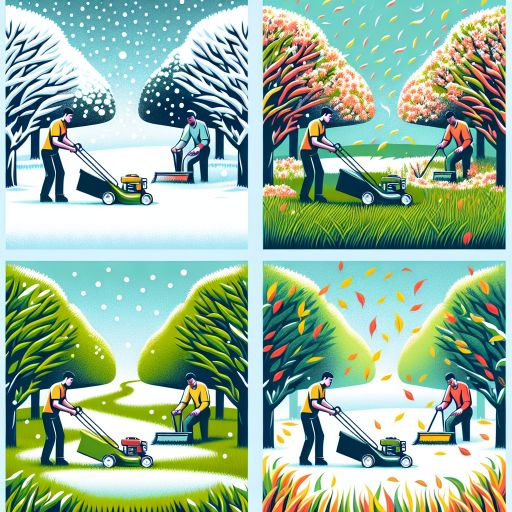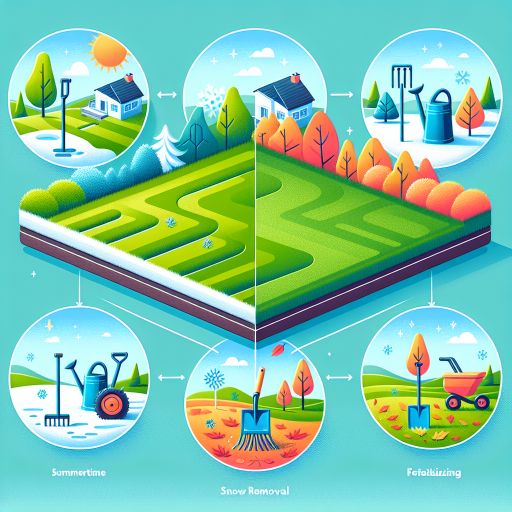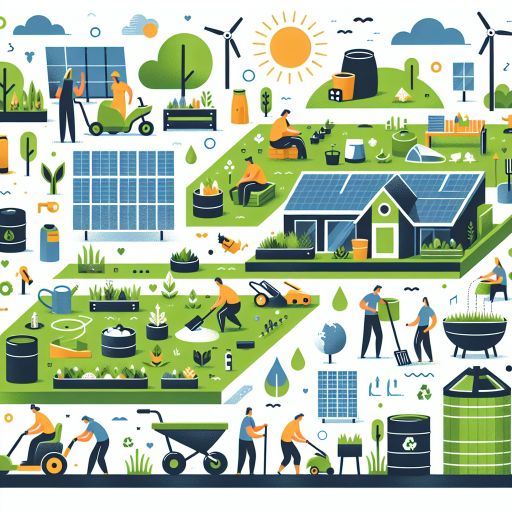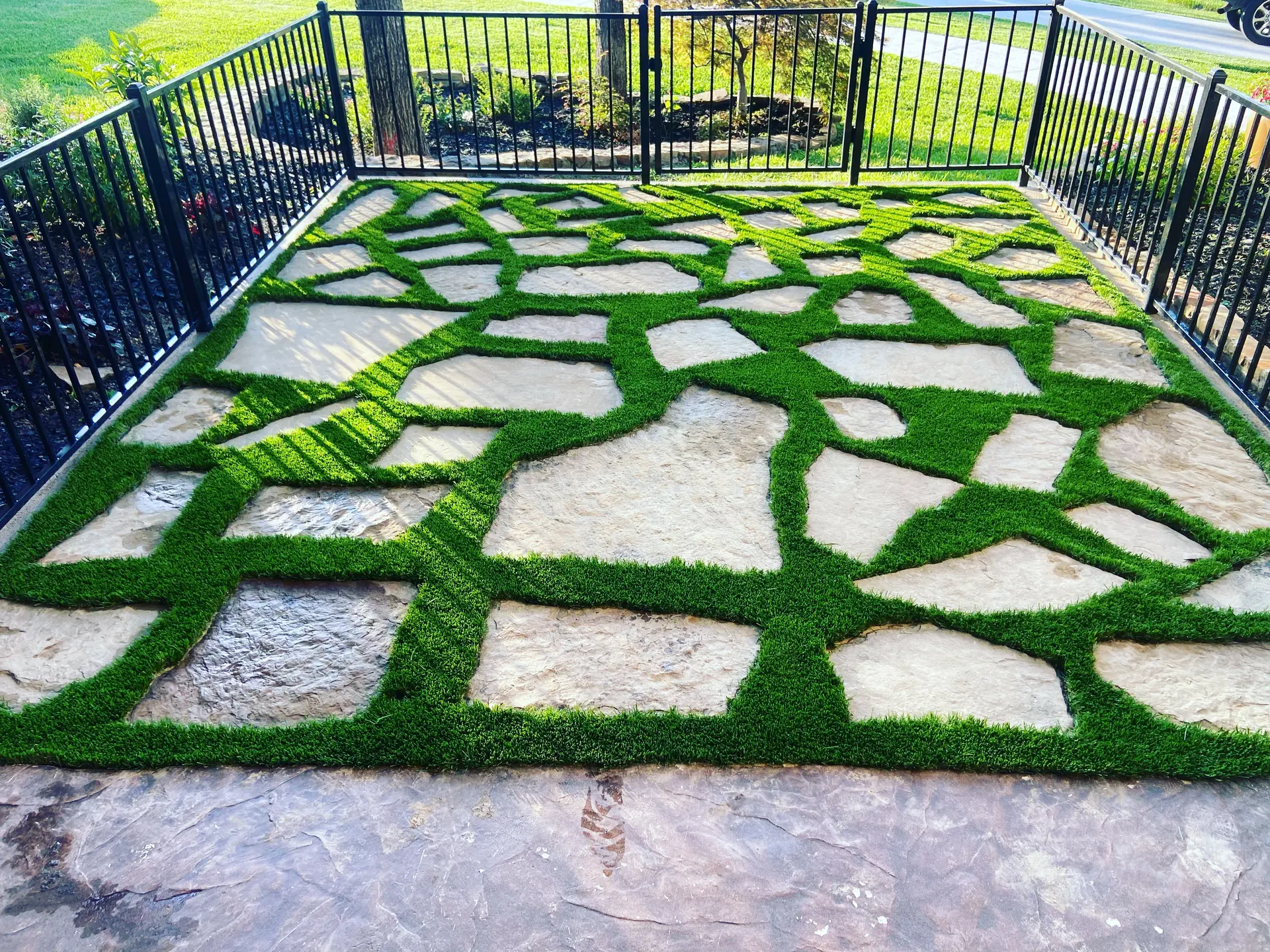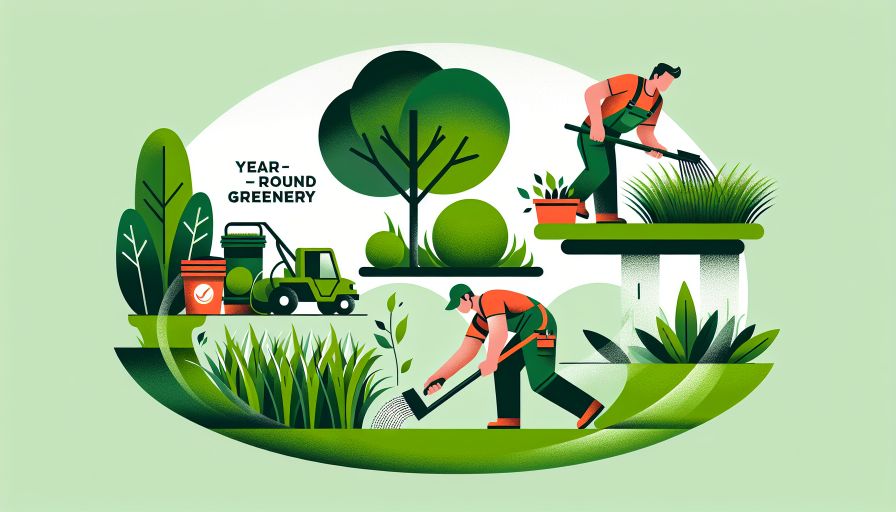
- Understanding Lawn and Synthetic Turf Basics
- Seasonal Maintenance for Natural Lawns
- Year-Round Care Strategies for Synthetic Turf
- Environmental and Economic Impacts of Lawn and Turf Choices
- Common Problems and Solutions for Lawns and Synthetic Turf
- Sustainable Practices for Lawn and Synthetic Turf Maintenance
- Expert Insights and Advanced Techniques
Understanding Lawn and Synthetic Turf Basics
Lush lawns and synthetic turfs each have distinct characteristics that appeal to various homeowners and institutions seeking year-round greenery. Understanding these basics is crucial for proper maintenance and informed decision-making.
Natural lawns typically consist of grass species such as Kentucky bluegrass, Bermuda grass, or fescues. These grasses require adequate sunlight, water, and nutrients to thrive. Factors such as soil composition, pH levels, and climate heavily influence their growth. Lawns are often preferred for their aesthetic appeal, cooling effects, and biodiversity support. However, maintaining natural lawns can be labor-intensive and subject to seasonal variations.
Synthetic turfs, made from polyethylene, polypropylene, or nylon, replicate the appearance of natural grass. They were initially designed for sporting venues but have increasingly gained popularity in residential and commercial settings due to their low maintenance requirements and durability. Unlike natural lawns, synthetic turfs do not need watering, mowing, or fertilization, making them a practical option in areas facing water scarcity or for individuals seeking reduced upkeep.
When choosing between natural lawns and synthetic turfs, homeowners and facility managers should consider several factors:
- Climate: Natural lawns might struggle in extreme weather conditions, whereas synthetic turfs remain unaffected.
- Maintenance: Natural lawns require regular care, including mowing, fertilizing, and irrigation. Synthetic turfs need occasional cleaning and infill replacement but no regular watering or mowing.
- Lifespan: High-quality synthetic turfs can last 15-20 years, while natural lawns may require reseeding and renovation over time.
- Environmental Impact: Synthetic turfs reduce water use, but their production and disposal have environmental considerations. Natural lawns contribute to carbon sequestration but require more resources to maintain.
Understanding these fundamentals provides a foundation for effective lawn and turf management, ensuring that greenery remains vibrant and attractive throughout the year.
Seasonal Maintenance for Natural Lawns
Maintaining a natural lawn year-round involves adapting care routines and practices to the changing seasons. Each season presents unique challenges and opportunities for lawn maintenance, ensuring optimal growth and health. Below is a detailed guide on seasonal maintenance for natural lawns.
Spring
Spring is a critical period for lawn care as the grass begins to awaken from winter dormancy.
- Raking: Clear away winter debris, leaves, and dead grass to encourage new growth.
- Aeration: Aerate the lawn to relieve soil compaction and improve water and nutrient absorption.
- Fertilization: Apply a balanced, slow-release fertilizer to supply essential nutrients for growth.
- Weed Control: Apply pre-emergent herbicides to prevent weed seeds from germinating.
Summer
Summer lawn care focuses on maintaining health during heat and potential drought conditions.
- Irrigation: Water deeply and infrequently, aiming for about 1 inch of water per week, adjusting for rainfall.
- Mowing: Raise the mowing height to encourage deeper root growth and shade the soil, preventing heat stress.
- Pest Management: Monitor for signs of pests and treat as necessary using integrated pest management (IPM) techniques.
- Hydration: Water lawns early in the morning to reduce evaporation and fungal diseases.
Fall
Fall is an ideal time to prepare the lawn for winter and promote healthy growth in spring.
- Seeding: Overseed thin spots to ensure a thick, lush lawn the following spring.
- Aeration: Apply core aeration again to relieve soil compaction from summer activity.
- Fertilization: Use a high-nitrogen fertilizer to support root development before winter.
- Weed Control: Apply post-emergent herbicides to control broadleaf weeds.
Winter
Winter care involves protecting the lawn during dormancy and preparing it for the next growing season.
- Minimal Activity: Limit foot traffic on the lawn to prevent damage to dormant grass.
- Debris Removal: Keep the lawn free of leaves and debris to prevent mold and disease.
- Equipment Care: Winterize and store lawn care equipment properly to extend their lifespan.
- Planning: Take time to assess the past year’s lawn care routine and plan for next season’s improvements.
By adopting these seasonal maintenance practices, homeowners can achieve a lush, healthy lawn year-round. Proper timing and consistent care are essential for supporting natural grass growth and resilience through the changing seasons.
Year-Round Care Strategies for Synthetic Turf
Synthetic turf offers a versatile and low-maintenance alternative to natural grass, and ensuring its longevity and aesthetic appeal requires strategic care. At Prime Design Turf, our approach to synthetic turf maintenance integrates our extensive experience and commitment to quality. Here are some year-round care strategies for maintaining lush, durable synthetic turf:
Regular Cleaning: One of the primary maintenance tasks is regular cleaning. Periodically remove debris such as leaves, dust, and litter using a leaf blower, rake, or a stiff-bristled broom. This prevents the buildup of organic material that can promote weed growth and affect the turf’s appearance.
Brushing: Frequent brushing helps to keep the synthetic fibers upright and maintain a natural look. Use a power brush or a broom with synthetic bristles to redistribute the infill material and ensure that the fibers remain standing. This is particularly important in high-traffic areas to prevent matting.
Addressing Stains and Spills: Accidental spills should be cleaned promptly to prevent staining. Common household cleaners can often handle minor spills. For tougher stains, such as oil or grease, use a mild detergent mixed with water. It’s important to avoid harsh chemicals that could damage the turf fibers.
Weed and Moss Control: While synthetic turf is largely weed-resistant, occasional weeds can still sprout at the edges or seams. Use a water-based weed killer to address any unwanted growth, and employ moss control products if necessary to prevent moss buildup in damp areas.
Pet Waste Management: For pet-friendly zones, promptly remove solid waste and hose down the area to prevent odors and bacterial growth. Enzyme-based cleaners are effective in eliminating urine odors and ensuring a hygienic surface for both pets and humans.
Infill Top-Ups and Repairs: Over time, the infill material (sand or rubber particles) can become compacted. Check high-use areas regularly and consider top-ups to maintain the desired level of cushioning and stability. Inspect seams and edges for any signs of wear or damage and address small issues promptly to prevent them from becoming larger problems.
Seasonal Checks: Conduct seasonal inspections to identify and address any damage caused by weather or use. This includes checking for signs of UV degradation, fiber wear, or drainage issues. Keeping an eye on the turf’s condition helps in planning necessary maintenance and repairs.
At Prime Design Turf, we understand that every synthetic turf project has unique requirements. Our personalized service ensures that we tailor our maintenance tips and solutions to meet your specific needs, delivering both aesthetic appeal and functional performance. With over 20 years of experience, we blend creative design with meticulous installation, offering unbeatable prices and a commitment to excellence in transforming your spaces.
Environmental and Economic Impacts of Lawn and Turf Choices
When considering lawn and synthetic turf options, understanding their environmental and economic impacts is crucial. Both choices present unique challenges and benefits that influence decisions based on sustainability and cost-effectiveness.
Environmental Impacts:
Natural lawns and synthetic turfs have distinct environmental footprints. Natural lawns contribute positively by providing oxygen, filtering pollutants, and supporting biodiversity. However, they also require significant water, fertilizers, and pesticides, which can have adverse environmental effects. Conversely, synthetic turfs save water and reduce chemical usage but come with concerns such as heat retention and microplastic pollution.
Some key environmental factors to consider include:
- Water Usage: Natural lawns typically require regular watering, especially in arid regions, which can strain local water resources. Synthetic turf eliminates the need for irrigation, saving substantial quantities of water annually.
- Carbon Footprint: The maintenance of natural lawns (mowing, fertilizing) emits greenhouse gases. Synthetic turf has an initial high carbon footprint due to manufacturing but requires minimal maintenance, reducing ongoing emissions.
- Biodiversity: Lawns can support local wildlife and insects if maintained organically. Synthetic turf offers limited habitat value for flora and fauna.
- Heat Island Effect: Synthetic surfaces can become much hotter than natural grass, potentially contributing to urban heat island effects.
The following table highlights some of these environmental impacts:
| Environmental Aspect | Natural Lawn | Synthetic Turf |
|---|---|---|
| Water Usage | High | Low |
| Carbon Footprint | High | Moderate (high initial, low ongoing) |
| Biodiversity Support | High (if organic) | Low |
| Heat Island Effect | Low | High |
Economic Impacts:
Economic considerations play a significant role in the choice between natural lawns and synthetic turf. Natural lawns may be less expensive upfront but incur ongoing costs for maintenance supplies and labor. In contrast, synthetic turf has a high initial installation cost but minimal ongoing expenses.
Key economic factors include:
- Installation Costs: Natural lawns are generally cheaper to install than synthetic turf, which requires specialized materials and labor.
- Maintenance Costs: Expenses for natural lawns include water, fertilizers, pesticides, and equipment for mowing. Synthetic turf’s maintenance is limited to periodic cleaning and infill management, reducing overall costs.
- Lifespan: Natural lawns can last indefinitely with proper care, while synthetic turf usually needs replacement after 8-15 years, impacting long-term cost calculations.
- Property Value: Well-maintained natural lawns can enhance curb appeal and potentially increase property value. Synthetic turf appeals for low-maintenance properties but may not have the same aesthetic value for all buyers.
The following table provides a comparison of these economic impacts:
| Economic Aspect | Natural Lawn | Synthetic Turf |
|---|---|---|
| Installation Costs | Low | High |
| Maintenance Costs | High | Low |
| Lifespan | Indefinite (with care) | 8-15 years |
| Property Value Impact | High | Variable |
Ultimately, the choice between natural lawns and synthetic turf should be guided by a thorough understanding of both environmental and economic impacts, aligning with personal values and regional considerations.
Common Problems and Solutions for Lawns and Synthetic Turf
Common Problems and Solutions for Lawns and Synthetic Turf
Maintaining both natural lawns and synthetic turf comes with its own set of challenges. Understanding common issues and their solutions can help ensure that your greenery remains lush and healthy throughout the year.
Natural Lawns:
1. Weeds: Weeds are a prevalent issue for natural lawns. They compete with grass for water, nutrients, and light, often overpowering desired plants.
- Solution: Regular mowing, proper fertilization, and the use of pre-emergent herbicides can prevent weed proliferation. Hand-pulling or spot-treating with post-emergent herbicides can address existing weed problems.
2. Pests: Grubs, chinch bugs, and other pests can cause significant damage to natural lawns.
- Solution: Biological controls, such as beneficial nematodes, can effectively manage grub infestations. Integrated Pest Management (IPM) strategies, including the use of insecticides, can help control other pests.
3. Disease: Fungal diseases, such as dollar spot and brown patch, can mar the appearance of natural lawns.
- Solution: Proper watering techniques, increased air circulation, and the application of fungicides can manage and prevent lawn diseases.
4. Thatch Buildup: Thatch, a layer of dead grass and roots, can create a barrier that restricts water, oxygen, and nutrients.
- Solution: Regular aeration and dethatching can help break up this layer and promote healthy grass growth.
5. Soil Compaction: High foot traffic can compact soil, making it difficult for grass roots to receive necessary air and nutrients.
- Solution: Aeration, either through mechanical means or the use of aerating shoes, can help alleviate compaction and improve soil conditions.
Synthetic Turf:
1. Infill Compaction: Over time, synthetic turf infill materials, such as sand or crumb rubber, can become compacted.
- Solution: Regularly brushing and raking the turf can redistribute infill and maintain an even surface.
2. Drainage Issues: Poor drainage can lead to water pooling on synthetic turf surfaces.
- Solution: Ensuring proper installation with a well-designed base and drainage system is crucial. Inspecting and maintaining drainage systems periodically can prevent and address water buildup.
3. Odor: Synthetic turf, particularly with pet use, can develop unpleasant odors.
- Solution: Regular cleaning with water and enzyme-based cleaners can help neutralize and eliminate odors. Rinsing with a hose periodically is also beneficial.
4. Wear and Tear: High-traffic areas on synthetic turf might show signs of wear over time.
- Solution: Rotating activities and using protective mats in heavily used areas can help distribute wear more evenly. Periodic inspection and targeted repairs can prolong the turf’s lifespan.
5. Algal Growth: Shaded and damp areas may foster algal growth on synthetic turf.
- Solution: Regular cleaning and ensuring adequate sunlight exposure can prevent algae. In some cases, a mild bleach solution can be used to clean affected areas, followed by thorough rinsing to remove residues.
By addressing these common problems with effective solutions, homeowners and facility managers can maintain visually appealing and functional green spaces, whether natural or synthetic.
Sustainable Practices for Lawn and Synthetic Turf Maintenance
Sustainable practices in lawn and synthetic turf maintenance not only help in preserving the environment but also mitigate long-term costs. Adopting eco-friendly methods ensures the health of natural lawns and prolongs the lifespan of synthetic turf.
Water Conservation: One effective approach is using water-efficient irrigation systems. Drip irrigation and smart sensors that adjust watering schedules based on weather conditions can significantly reduce water consumption. Additionally, opting for drought-resistant grass varieties can further diminish the need for frequent watering.
Organic Fertilizers and Pest Control: Utilizing organic fertilizers helps replenish the soil with essential nutrients without harming ecosystems. For pest control, integrated pest management (IPM) strategies, such as introducing beneficial insects and using organic pesticides, can maintain lawn health without relying on harmful chemicals.
Mowing Practices: Regular mowing at the correct height promotes stronger grass roots and reduces weed growth. Mulching mowers, which leave finely chopped grass clippings on the lawn, recycle nutrients back into the soil, enhancing grass vitality.
Composting: Composting lawn clippings and other organic yard waste creates nutrient-rich compost that can be used to enrich soil. This practice reduces landfill waste and supports sustainable nutrient cycling in lawns.
Sustainable Practices for Synthetic Turf:
Resource-Efficient Materials: Choosing synthetic turf made from recycled or sustainable materials minimizes environmental impact. Manufacturers provide options with lower carbon footprints, contributing to greener solutions.
Regular Cleaning and Maintenance: Keeping synthetic turf clean using eco-friendly solutions extends its lifespan. Regular grooming with biodegradable products prevents buildup of debris and organic matter.
End-of-Life Recycling: When synthetic turf reaches the end of its useful life, recycling options are available. Manufacturers often have take-back programs, ensuring that old turf is repurposed or recycled into new products, reducing landfill waste.
Adopting these sustainable practices ensures that both natural lawns and synthetic turfs remain not only visually appealing but also environmentally responsible.
Expert Insights and Advanced Techniques
Expert Insights
Gaining perspectives from experts is crucial for achieving and maintaining lush lawns and effective synthetic turf solutions year-round. Here are some advanced techniques recommended by industry professionals:
Advanced Aeration Techniques
Aeration is essential for maintaining healthy lawn growth. Experts suggest deep core aeration as an advanced method to facilitate better air, water, and nutrient penetration into the soil. This technique involves removing plugs of soil to reduce thatch buildup and alleviate soil compaction.
Benefits of Deep Core Aeration:
- Improves root growth by enhancing soil structure
- Increases water infiltration, promoting efficient use of water
- Reduces soil compaction, aiding in the overall health of the grass
Precision Fertilization
Experts recommend using precision fertilization techniques to ensure nutrients are applied efficiently and evenly. Products like slow-release fertilizers are highly recommended for their ability to provide a steady supply of nutrients over time, preventing nutrient run-off and environmental harm.
Steps for Effective Precision Fertilization:
- Conduct a soil test to identify nutrient deficiencies
- Select a fertilizer blend that matches the specific needs of your soil
- Use a calibrated spreader to ensure even application
- Follow a seasonal fertilization schedule for optimal growth
Integrated Pest Management (IPM)
IPM is a comprehensive approach that combines different strategies for managing pests effectively while minimizing environmental impact. Experts advocate for IPM to address pest issues in both natural and synthetic turf settings.
Key Components of IPM:
- Regular monitoring and accurate identification of pests
- Utilizing biological controls such as beneficial insects
- Implementing cultural practices like rotating mowing patterns
- Applying chemical controls judiciously and based on threshold levels
Water Management Technologies
Efficient water management is vital for maintaining healthy lawns and synthetic turf. Experts recommend the use of smart irrigation systems that adjust watering based on weather conditions and soil moisture levels. These systems help in conserving water and promoting healthier growth.
Advantages of Smart Irrigation Systems:
- Reduce water wastage by delivering precise amounts
- Lower utility costs associated with irrigation
- Provide real-time data for better lawn management
Advanced Techniques for Synthetic Turf
Synthetic turf requires different maintenance techniques compared to natural grass. Experts suggest regular grooming and infill management to maintain the turf’s appearance and performance. Grooming helps in keeping the fibers upright and reduces matting while infill management ensures the surface remains even and shock-absorbent.
Recommendations for Synthetic Turf Maintenance:
- Use specialized brushes and rakes for grooming
- Periodically add or redistribute infill materials
- Perform routine cleaning to remove debris and contaminants
Conclusion
Expert insights and advanced techniques play a pivotal role in maintaining year-round greenery for both natural lawns and synthetic turf. By adopting these methods, homeowners and groundskeepers can optimize the health, appearance, and longevity of their green spaces efficiently.
